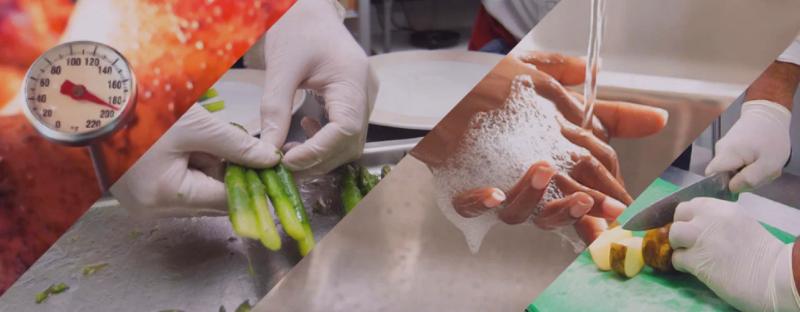The Business of Eating has always been about clean
Anyone who has picked up a Cape Gazette in the last 10 years knows that I like writing about restaurants. And no, my columns are not reviews. I do that at RehobothFoodie.com. My intention here is to promote our dining scene here in the Cape Region. By introducing the owners, chefs, distillers, brewers, etc., etc. to you, perhaps I can put a face on our industry. That has proven to be a challenge during this devastating time for our brave entrepreneurs who often risk everything to feed us and our visitors.
Few things annoy me more than Facebook posts (and the like) from people who question the safety of ordering takeout food during this time. For many consumers, the concept of washing hands, sanitizing surfaces, and being aware of what you touch may be a new concept. But it is and always has been an everyday concern for well-run eateries.
Every morning my email box greets me (and my cold-brew coffee) with around 60 to 100 emails from Cape Region locals and vacationers. One subject that often appears is the issue of food sanitation. This is a front-burner concern for any competently run restaurant. They say that experience is what you get when you didn’t get what you wanted, and that certainly applies to the volumes of rules and regulations that grew out of real-life encounters with foodborne pathogens. As science and technology merged with “CSI”-style detective work, these regulations became organized into a logical sequence of food safety procedures. One of the primary compilations is known as HACCP. From the moment a seed is planted or an animal is born (or hatched), Hazard Analysis and Critical Control Points are identified and monitored to ensure that the risk of contamination remains as low as possible. On the restaurant level, strict procedures for storing, handling, cooking and serving become a key element in the training of managers, cooks and even servers.
How long did that case of spare ribs sit on the loading dock? Is that lettuce in the walk-in cooler stored on a shelf below the raw chicken? How hot is the center of that juicy burger? Why is my server’s thumbprint in my mashed potatoes? Most states mandate food service education such as the industry-standard ServSafe program as a required element in every type of food industry education. That and other programs address these “Critical Control Points” where quality is threatened by temperature, cross-contamination (between raw meats and “ready to eat” items like lettuce, for example) and wherever that server’s thumb might have been before it landed in your mashers. Most of these practices are hidden behind the swinging doors of professional kitchens. The most obvious to the customer is probably those multi-lingual HACCP-mandated rest room signs insisting that “employees must wash their hands before returning to work.”
There’s a lot of hysteria and misinformation nowadays regarding gloves, masks and the like. I often hear people complain that the person preparing their food wasn’t wearing gloves, and it seems like that would be a major offense. Interestingly, many state health inspectors disagree. They maintain that gloves can give workers a false sense of security when handling non-food items such as money, doorknobs, cans, boxes, etc. The next time you order from a carryout, a truck or a stand at an outdoor event, watch the preparer’s hands. Does he or she handle your money and make change wearing the same gloves that touched your corn dog? In the words of the state health inspector for my most recent restaurant, “the only things those gloves keep clean are their hands.” In recent weeks I have been impressed with the many restaurateurs who change gloves over and over as they hand over takeout bags and handle money. If they don’t change gloves every time, then they are increasing the possibility of pathogen transmission.
In the good ol’ days when we could actually visit restaurants, one of my pet peeves was when a server graciously - and innocently - carried your half-eaten food to back into the kitchen to be boxed/bagged for you to take home. The danger is that the plate and/or the food might contact the same surface where fresh food is waiting to be delivered to other customers. What if I had coughed onto my plate while eating? More and more restaurants are wising up to this potential cross-contamination by bringing the carryout container to the table and letting the customer box or bag the leftovers. In fact, when I don’t finish the entire meal (not all that frequent an occurrence…) I ask the server to bring me the container rather than having my partially finished plate returned to the kitchen.
Let’s face it: Much of this boils down to trust. You trust the server, prep cook or line cook to care enough about his job to scrub his hands after visiting the rest room. You rely on the restaurant owner to operate in her best interest by making it clear to employees that the business - and their livelihoods - depend on vigilant food-handling.
Happily, all this attention to science and regulation is working, and chances are very good that all your restaurant experiences - takeout and otherwise - will be non-toxic. In fact, epidemiological studies have shown that food served by the majority of fast-food chains is safer than that prepared in your own home. Furthermore, technical advances and input from the food industry have given rise to updated and improved protocols designed to prevent, detect and respond to food safety problems.
It’s no secret that customers’ sense of well-being is vital to success in the restaurant business – whether it’s a food truck, a fast-food drive-thru or a fine-dining steakhouse. Restauranting is theater, so guests don’t hear much about food safety and sanitation. But for the eateries that want to survive, it’s their number one priority.




















































